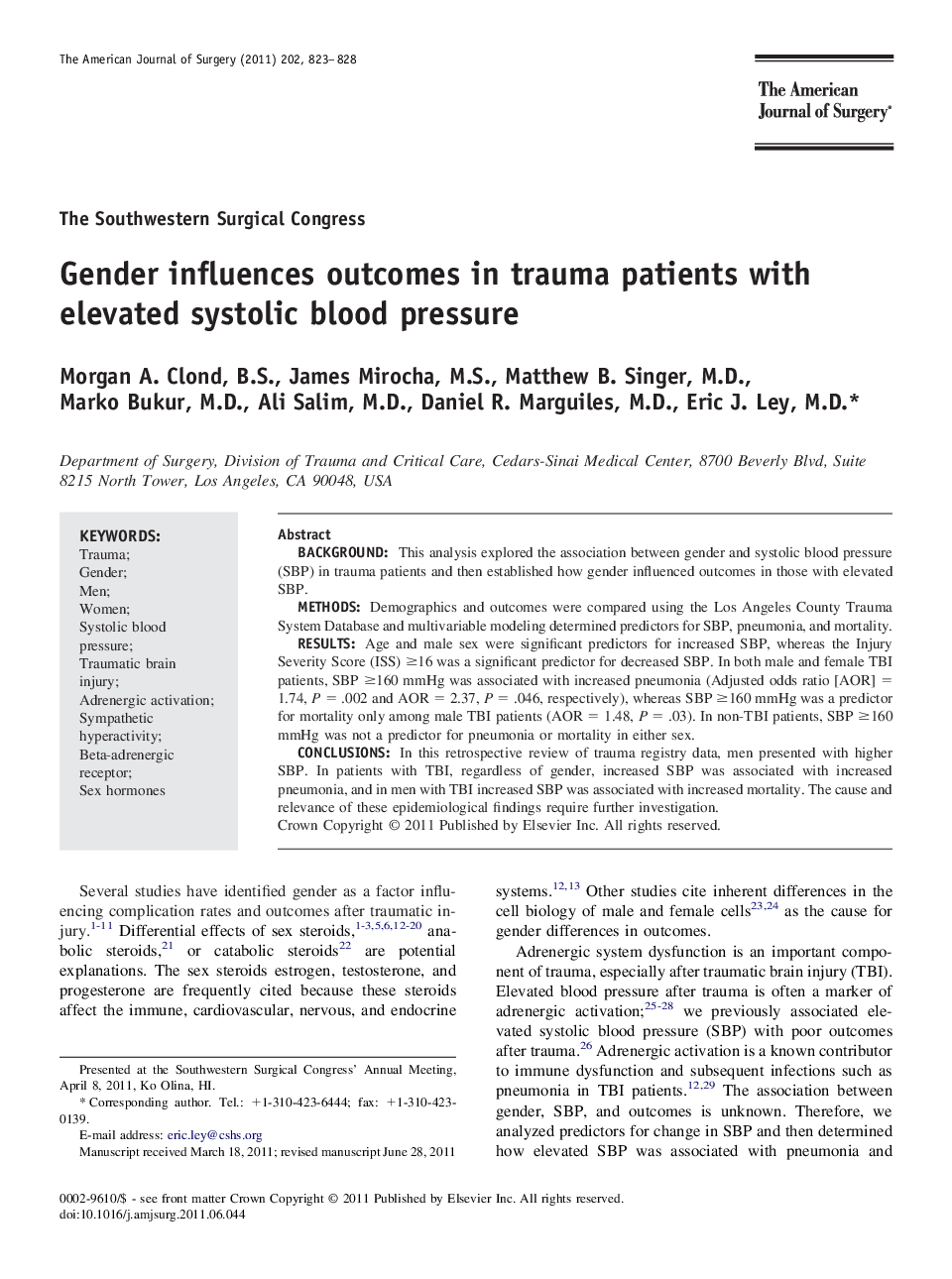| Article ID | Journal | Published Year | Pages | File Type |
|---|---|---|---|---|
| 4279894 | The American Journal of Surgery | 2011 | 6 Pages |
BackgroundThis analysis explored the association between gender and systolic blood pressure (SBP) in trauma patients and then established how gender influenced outcomes in those with elevated SBP.MethodsDemographics and outcomes were compared using the Los Angeles County Trauma System Database and multivariable modeling determined predictors for SBP, pneumonia, and mortality.ResultsAge and male sex were significant predictors for increased SBP, whereas the Injury Severity Score (ISS) ≥16 was a significant predictor for decreased SBP. In both male and female TBI patients, SBP ≥160 mmHg was associated with increased pneumonia (Adjusted odds ratio [AOR] = 1.74, P = .002 and AOR = 2.37, P = .046, respectively), whereas SBP ≥160 mmHg was a predictor for mortality only among male TBI patients (AOR = 1.48, P = .03). In non-TBI patients, SBP ≥160 mmHg was not a predictor for pneumonia or mortality in either sex.ConclusionsIn this retrospective review of trauma registry data, men presented with higher SBP. In patients with TBI, regardless of gender, increased SBP was associated with increased pneumonia, and in men with TBI increased SBP was associated with increased mortality. The cause and relevance of these epidemiological findings require further investigation.
